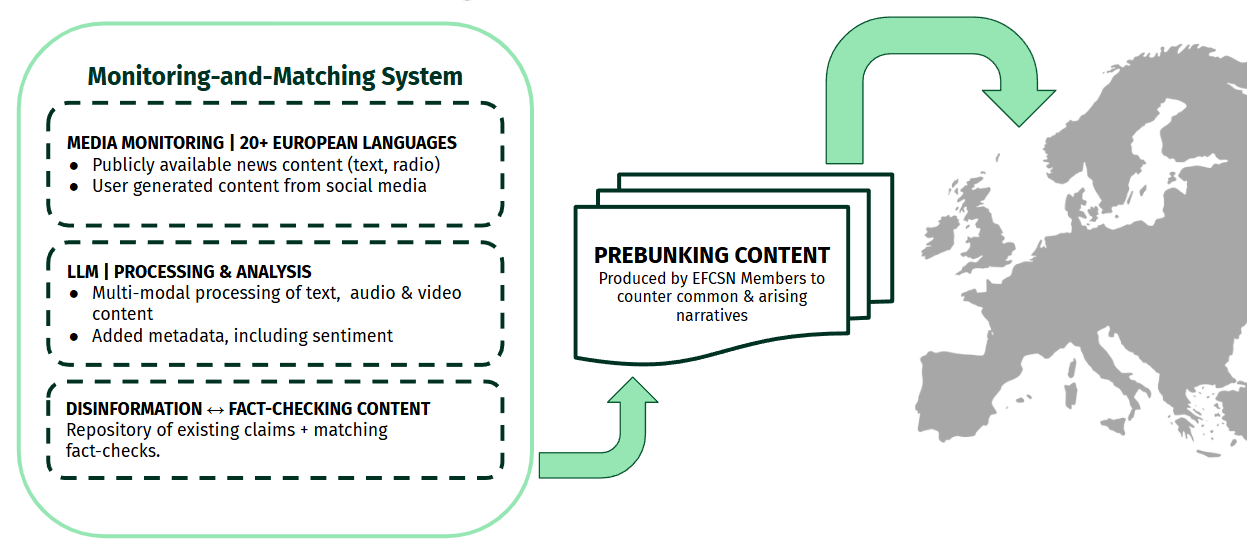Prebunking at Scale is enhancing public resilience against dis- and misinformation by proactively addressing emerging false claims and narratives before they gain widespread traction. To do so, we’re combining the strengths of two of the most widely used interventions against the spread of disinformation: prebunking and debunking.
Prebunking at Scale
What Are We Building?
- Best-practice methodology for prebunking, backed up by decades of experience from fact-checkers across Europe and academic research.
- Cutting-edge media monitoring of publicly available news and social media content.
- Analysis and fact-checking content in 20+ European languages including multi-modal processing and metadata enrichment to aid fact-checkers in their understanding of the environment, alongside a database of content created by members and ready for fast deployment across Europe.

Follow our work
Prebunking Methodology
The methodology for prebunking was researched and developed by CRTA (Serbia) with the support of the rest of the EFCSN network of fact-checking organisations.
Prebunking is a proactive, evidence-based communication strategy that prepares individuals to resist manipulation before they encounter disinformation. Rooted in inoculation theory, it operates by alerting individuals to anticipated manipulation, exposing them to a weakened version of it, and equipping them with preemptive refutations. Unlike debunking, which responds to disinformation after it has spread, prebunking functions upstream, before content spreads or takes root. Together, prebunking and debunking form a complementary continuum of intervention strategies.
Prebunking can be applied at different levels of abstraction, including: claim-level, which addresses specific anticipated false claims, narrative-level, against a broader theme, or technique-level, against a particular manipulation strategy such as scapegoating. Which level to focus on depends primarily on the issue, its context, and the intended audience. There are also multiple strategies that can be employed, each targeting a different entry point to build resistance to misinformation. These include: fact-based, logic-based, and source-based approaches.
Our research and the experience of fact-checkers in our network supports an approach that is highly tailored to the issue in question, the context, and the audience, and notes that prebunking that combines multiple approaches is most effective for building cognitive resilience against misinformation.
Throughout the project, our member organisations will publish prebunking materials utilizing the definition and methodology described above, some of which will be shared on this page.
Media Monitoring & Analysis
Our comprehensive media monitoring and analysis tool is under development by EFCSN member organizations Full Fact (United Kingdom) and Maldita.es (Spain), with support from participating EFCSN members. Access is currently limited to EFCSN-certified fact-checking organizations.
Subscribe to the EFCSN newsletter
Stay up to date with the EFCSN’s work and receive the prebunking content directly to your inbox once a month while the project is active.